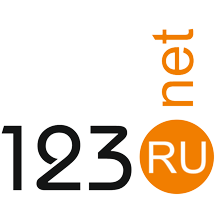I’m a lawyer – your number plate could be illegal without you realising & lead to massive fines… 7 ways to spot a dud
MANY drivers in the UK may be totally oblivious that they could well be breaking the law and risking huge fines for their aftermarket number plates, which do not meet the required legal standard.
Companies can legally sell number plates that are non-compliant but it is the driver’s responsibility to ensure the number plates on their vehicle comply with the strict regulations.
Innocent-looking number plates can land drivers with a £1,000 fine, so let’s take a look at what you really need to know to avoid falling foul of the law.
The Road Vehicles (Display of Registration Marks) Regulations 2001 spell out how every type of number plate applied to vehicles has to comply with certain specifications.
These are enforced by both the Driver and Vehicle Licensing Agency and the Department for Transport.
The plates should be manufactured to British Standard BS AU 145e, which makes sure that it is durable and it could appear on plate-recognising ANPR cameras.
What are ‘Grey’ or ‘Tinted’ plates, and are they legal?
One example of a non-compliant number plate is what is referred to as the ‘grey’ plate.
It’s just a slight tint added to the standard white or yellow background on the plates.
These tints seriously impair their reflectivity, making them unreadable at night or in poor lighting conditions.
The slightest fluctuation can make the plates illegal.
The law dictates that black characters must contrast with a standard white background for the front plate and a standard yellow background for the rear plate.
Any tinted or changed background that diminishes the reflectivity is against the law.
What about 3D and 4D Number Plates?
Another area where many motorists, perhaps unknowingly, fall foul of the law as regards their number plates is with 3D and 4D number plates.
While raised characters are allowed, multiple shades to give a 3D effect are not.
For example, many firms sell plates with raised letters surrounded by coloured outlines.
In this case, the characters would not be totally black, which is against the regulations.
The characters on the plates must be a single shade of black for uniformity and easy readability.
Any raised, plastic, acrylic, or Perspex lettering creating a 3D effect does not comply with the requirements of the law.
Correct Spacing and Additional Markings
The standard format includes two letters, followed by two numbers, a 33mm gap, and ends with three letters.
Any variation from this format, even in terms of spacing, is illegal.
In addition to that, no extra markings, such as websites or slogans, are permitted on a number plate.
The only additions (besides the maker’s name) that can be made include national identifiers like the Union Jack or the EU symbol, although the latter has some restrictions due to the laws put in place after Brexit.
Colours and Font Changes That Are Not Allowed
Characters on number plates must always be black.
Carbon fibre textures or any other colour used for characters is illegal.
You must have “Charles Wright” font, which has been adopted to standardise the look of all number plates so that they are alike to read easily.
It is illegal to alter the typeface so that it appears to be something else.
This also includes making changes for cosmetic purposes or to alter how it reads.
Also, you cannot move the fixing screws to alter the appearance of any characters or to make it say something else.
Devices to Obscure Number Plates: A Serious Offence
Last but not least, there are serious legal implications for using devices or materials that hide number plates, such as sprays, covers, or electronic gadgets.
In this respect, such actions not only mean breaking the law but can also lead to a charge of perverting the course of justice, leading to a hefty prison sentence if prosecuted.
In most instances, these devices are related to avoiding detection by ANPR systems in the case of speed cameras or congestion charge zones.
These offences can result in heavy fines, penalty points on your driving licence, or even criminal charges.
This means that they are taken very seriously and can have serious consequences.
If you are not sure of the legality of your number plates, then consult the guidelines laid down by the DVLA or seek advice from a professional.
Disclaimer: The content of this article is not a substitute for formal legal advice and no reliance should be placed upon it.
